Hilleberg’s tents have intrigued me for years. They are heavy. They are expensive. And people swear by them. When I’m adventuring, I like to go light and minimal, so I assumed Hilleberg’s products were contrary to my needs. But as I’ve started getting my kid into backpacking, my attitude has started to shift. I can’t just plan to keep hiking until the weather improves or I get to a protected area. I can’t ensure all my gear is treated with kid gloves. And I’m not traveling light and fast (we’ll get to that when she’s older). With my needs now more aligned with what Hilleberg is designing tents for, it was time to finally see what they were about.
Key Features and Overview
- Kerlon 1200 denier outer tent fabric
- Three 9mm poles
- All season design
- Freestanding dome
- Spacious fit for two; tight for three full-size adults
- Linked but separable inner and outer tent for simultaneous pitching
- Two doors
- Two vestibules
- Two pockets
- Optional footprint for the inner tent
- Also available as a two-person tent
- Weight: 8 pounds, 3 ounces
- Price: $1,490
The Hilleberg Allak 3 is a three-person, freestanding tent. It’s designed for all-season use. Typically, all-season are really just winter tents, as they lack the ventilation to tackle the summer months, so I was curious to try this out in warm-weather conditions common to most backpackers.

Unlike most tents found in the United States, it’s designed to be pitched fly first, with the body of the tent hanging suspended from the inside. While Hilleberg offers an optional mesh interior and a conversion kit for pitching the tent without the rainfly, you’re going to be disappointed if you typically sleep in your mesh tent with the rainfly off. It’s a tent that assumes there’s a good reason you aren’t cowboy camping.
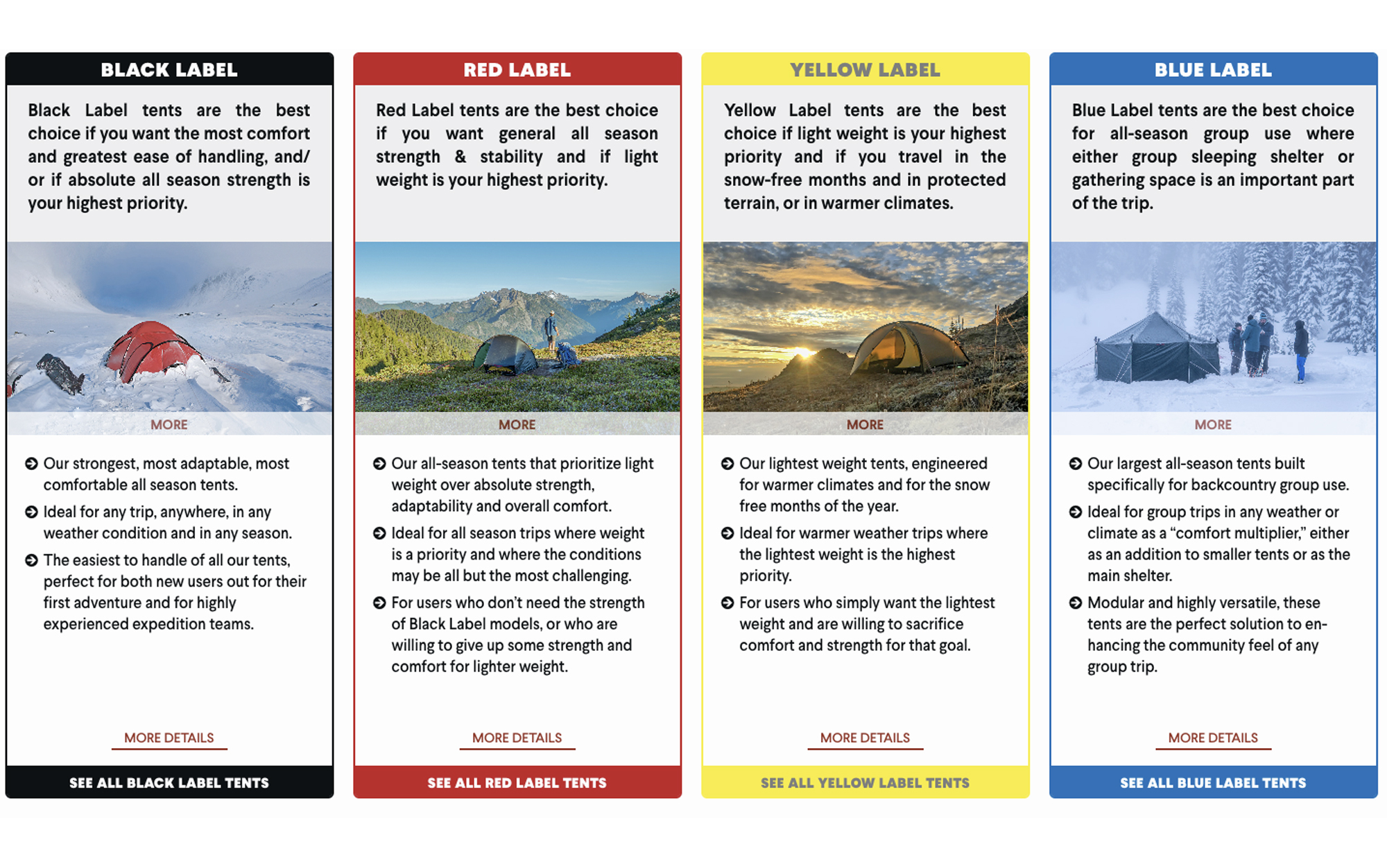
The Allak 3 is part of Hilleberg’s Red Label, which is designed for all-purpose, all-season. They also have a Yellow Label (three-season use), Blue Label (all-season group use) and Black Label (extreme use).
Testing the Hilleberg Allak 3 in the Field
My primary testing trip for the Hilleberg Allak 3 was a two-week long backpacking and car camping trip along the Washington Coast over the summer. In that time, we used the Hilleberg Allak 3 on everything from socked-in days on the Olympic Wilderness Coast to blazing sunshine to early shoulder season conditions. This trip did see reasonable wind gusts along the coast, but because I was traveling with my family I opted for protected campsites as much as possible. To get a better sense of the Hilleberg’s performance in windy conditions, I waited until a gusty mid-morning rolled around in December and set up the Hilleberg in exposed conditions closer to my home in Seattle.
Our testing trip began with backpacking along the Ozette Triangle out to the Olympic Coast. Despite being late August, the weather was slated to be cold and wet, to the point that we made a last-minute pit stop to pick up extra rain gear for the kid. Between the incoming rain and the extra time it took to get out to the coast, we ended up stopping early at an empty campsite along Sand Point. Ironically, it was a spot we had been washed out of a few years prior when some small holes in the bottom of our heavily used Tarptent Cloudburst 3 made the bathtub floor a little leaky. So I was curious to see if the Hilleberg Allak 3 would struggle in the relentlessly damp and humid conditions or if this would turn into our redemption tour.
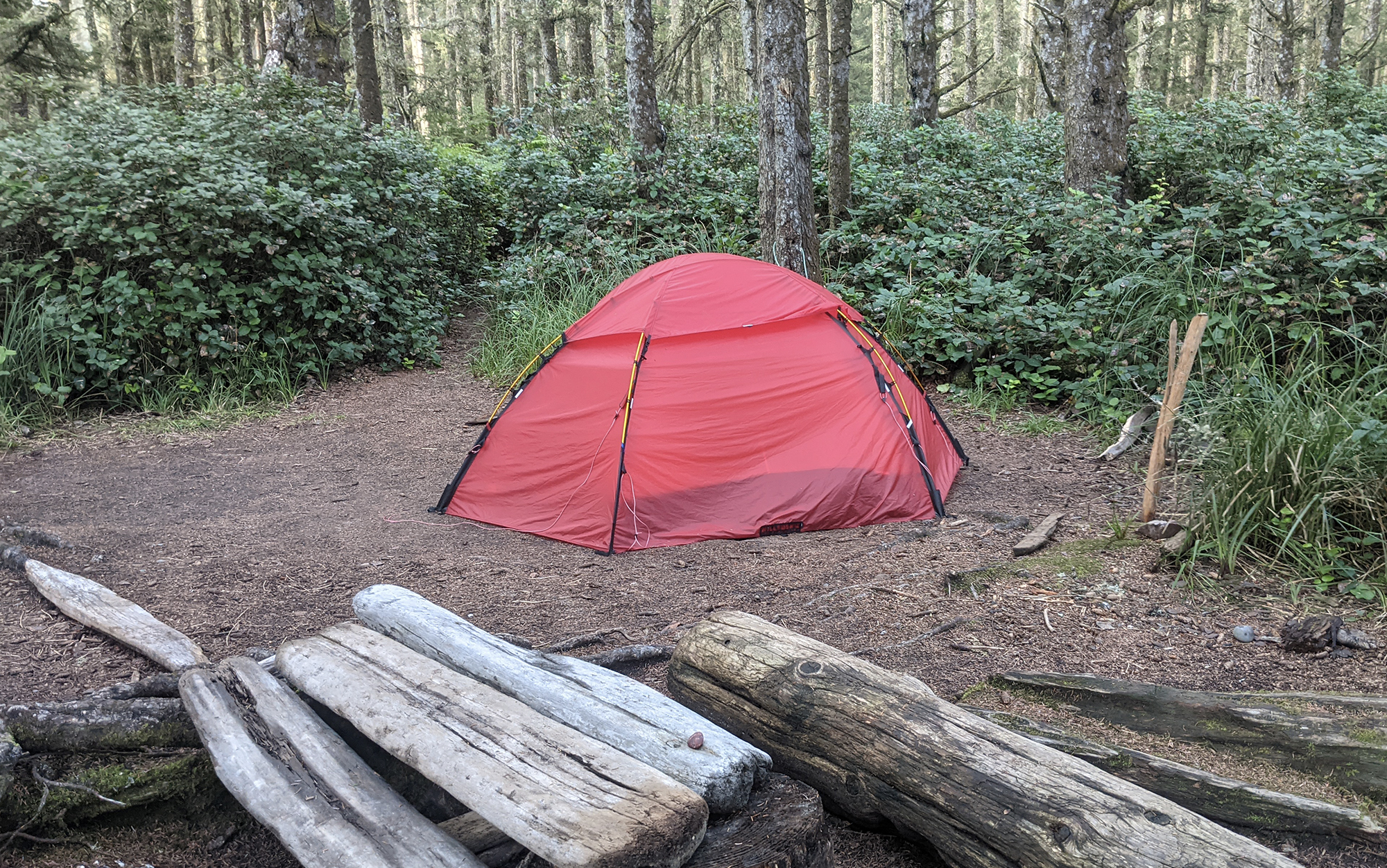
Setting up the Hilleberg Allak 3 is dead simple. There are three poles that you slot into color-coded sleeves on the exterior of the rainfly, which have snaps that attach along the rest of the length of each pole. I was curious to see the sleeves approach to securing the poles at each end, rather than a grommet. I found the color-coded sleeves are more intuitive and easier to use than grommets, as the poles can’t slip out of place during setup. But it’s typically a user-friendly detail that I only see with the best budget backpacking tents, as it’s usually difficult to get a completely taut profile with this sort of design.
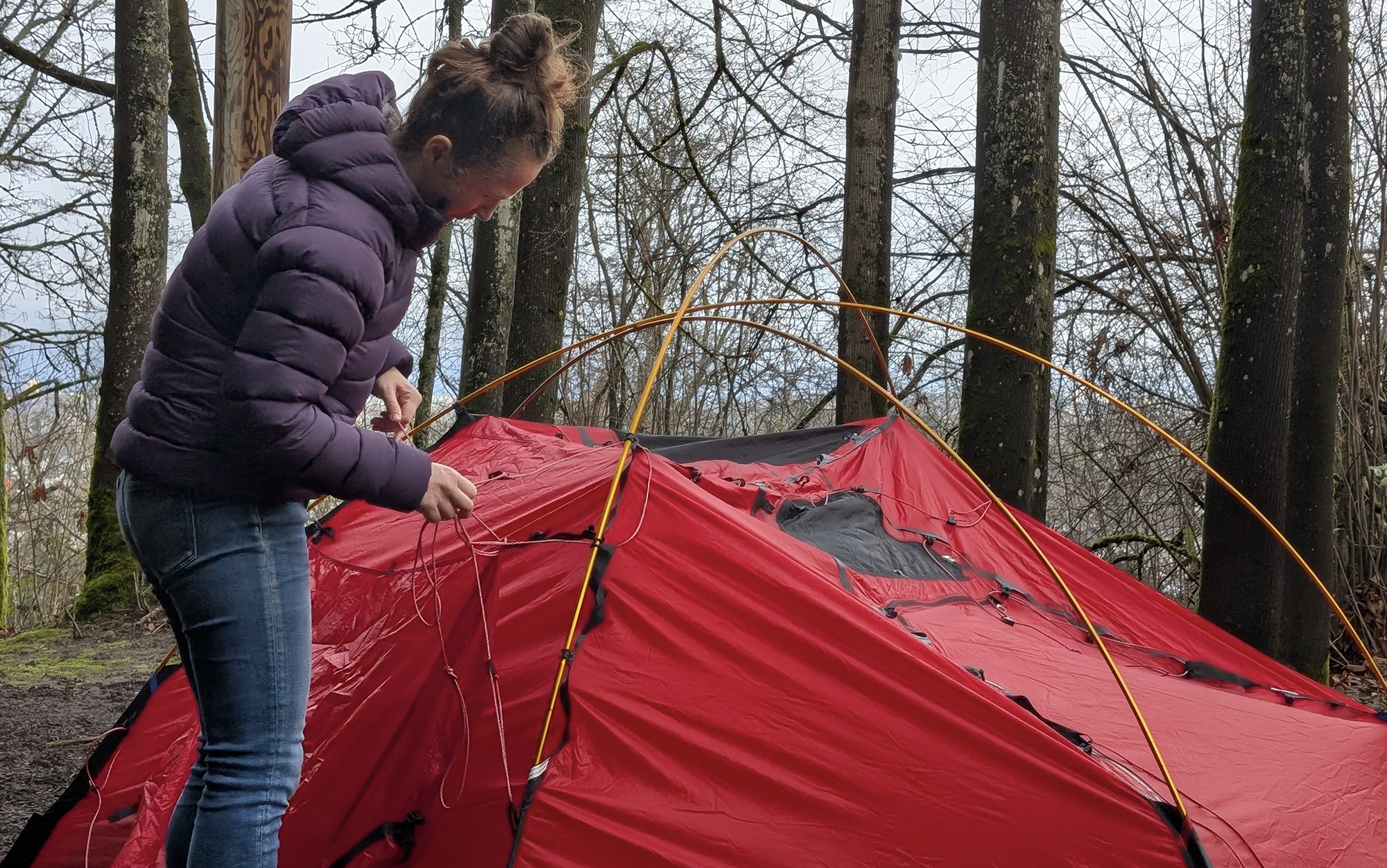
Not so with the Hilleberg Allak 3. Even without staking it out or using any of the (many) guylines, the profile of this tent was quite taut. I kept the setup pretty minimal that first night to see how it fared.
I set up the tent in a fairly protected location, but there was only so much I could do to protect the tent from the hurricane that is a small child on the first night of camping. When I finally headed over to the tent after securing the rest of the gear for the night, it looked like there was a mini mosh pit going on in there.
While the interior space is just barely wide enough for three people (we had a double sleeping pad and a single one), I was impressed by the interior head height. Both of the adults could sit up inside the tent at the same time. The kid could stand. Said kid could then launch herself onto the back of one of the adults, and only minimally disturb the other adult in the process. With other tents, I’m typically warning her against going too hard on the poles or doors, but I wasn’t as worried this time.
Part of this is that the tent’s three-pole structure was just more robust than the typical cross-pole design. The other reason, though, is that the Hilleberg Allak 3 has a classic European tent design, where the poles attach to the rain fly, and the body of the tent hangs from that. That meant that when the kid tumbled, she was rolling against fabric, and not disturbing the poles.
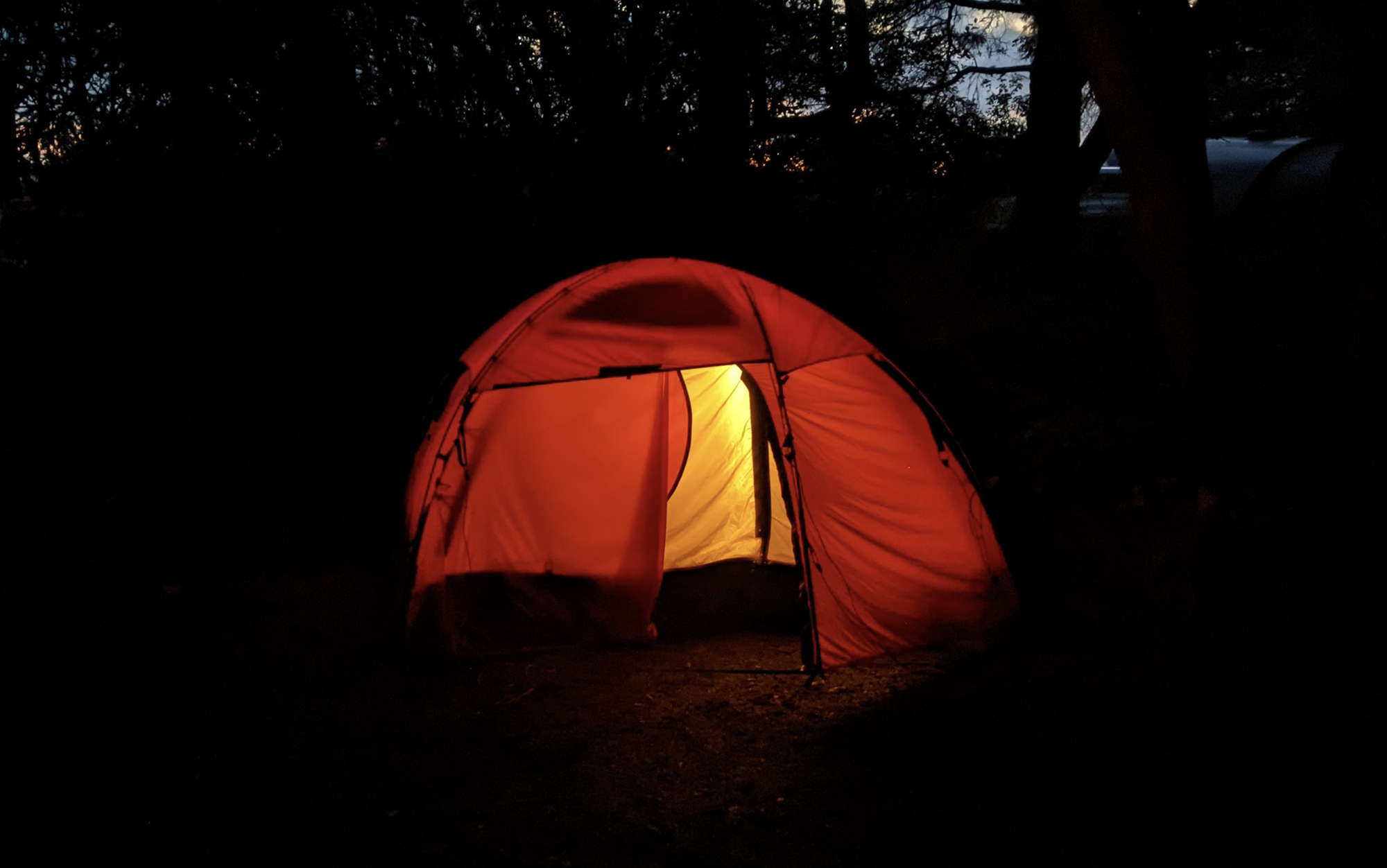
When I got into the tent, I also noticed that it was a lot warmer than the outside air, maybe by as much as 15 degrees. The Hilleberg Allak 3 was trapping the heat of our bodies very effectively. It was pretty chilly outside, so I appreciated the additional insulation. But concerned that this was going to lead to excessive condensation given the humid conditions of the Olympic Coast, I unzipped the doors to expose the mesh before we tucked in for the night, which brought the interior temperature closer to that of outside air. In the morning, there was no condensation to speak of.
Over the next week, I pushed the tent as far as I could to see if I could create condensation inside, even going as far as to completely zip up the interior while camping under open sky next to the ocean. It was always bone dry in the morning. And the rainfly, which did pick up a little moisture on the inside, would dry out very quickly once we opened the doors and got out of the tent.
On the last evening of our trip, a chilly and unseasonably dark day near the base of Mount St. Helens National Park, the kid retreated to the tent immediately after dinner and spent an hour carefully arranging her stuffed animals next to her sleeping bag and looking at books. She was clearly ready to be home, but until she got there, the Hilleberg Allak 3 was close enough.
What the Hilleberg Allak 3 Does Best
Where this tent excels is in taking the performance benefits of a higher end tent designed for the likes of serious mountaineers and making it accessible for less experienced users. You can do a lot wrong with this tent and you’ll still have a fabulous experience. I was absolutely blown away by how this tent handled condensation. The interior space doesn’t look like much at first, but it’s eminently livable. A mediocre pitch of this tent provided better stability and wind protection than anything else I’ve tried. A more thoughtful pitch of this tent is absolutely bombproof.
And it’s not just bombproof once you have everything dialed in, it’s bombproof while you are setting it up. To test this, I took the tent out a final time with the kid, to see what she thought about the setup in windy conditions. In the past, when I’ve set up other camping or backpacking tents in the wind, she’s freaked out a bit, to the point that sometimes my husband has to remove her from the area for a bit until I can get the thing properly staked and guylined out.
I started by handing her my phone and declaring her my official photographer, partially to give her a job and partially so she would pay some attention to what I was doing. Next I staked out the tent and started assembling the poles. The winds were intermittently gusting while I slotted into position, probably at around 20 miles per hour. Instead of worrying about the tent, the kid decided to come over and try to help me attach the clips on the rainfly to the poles. Once we were done, I asked her what she thought. “Good,” she said. Would you feel comfortable sleeping in it in the wind? “I would love that!”
Where the Hilleberg Allak 3 Can Improve
With the Hilleberg Rogan 3 you get best in class performance, but it comes at a price, both in dollars and ounces. At 8 pounds, 3 ounces, this is one of the heaviest backpacking tents I’ve ever tested. The Hilleberg Allak 3 weighs more than twice as much as the MSR Hubba Hubba, and nearly three times as much as a lightweight option like the Big Agnes Tiger Wall. Because I was only ever traveling 5 miles or less (albeit at a speed of maybe 1 mph), the weight of this tent wasn’t an issue for me. If I was planning a harder hike, this is not what I would choose.
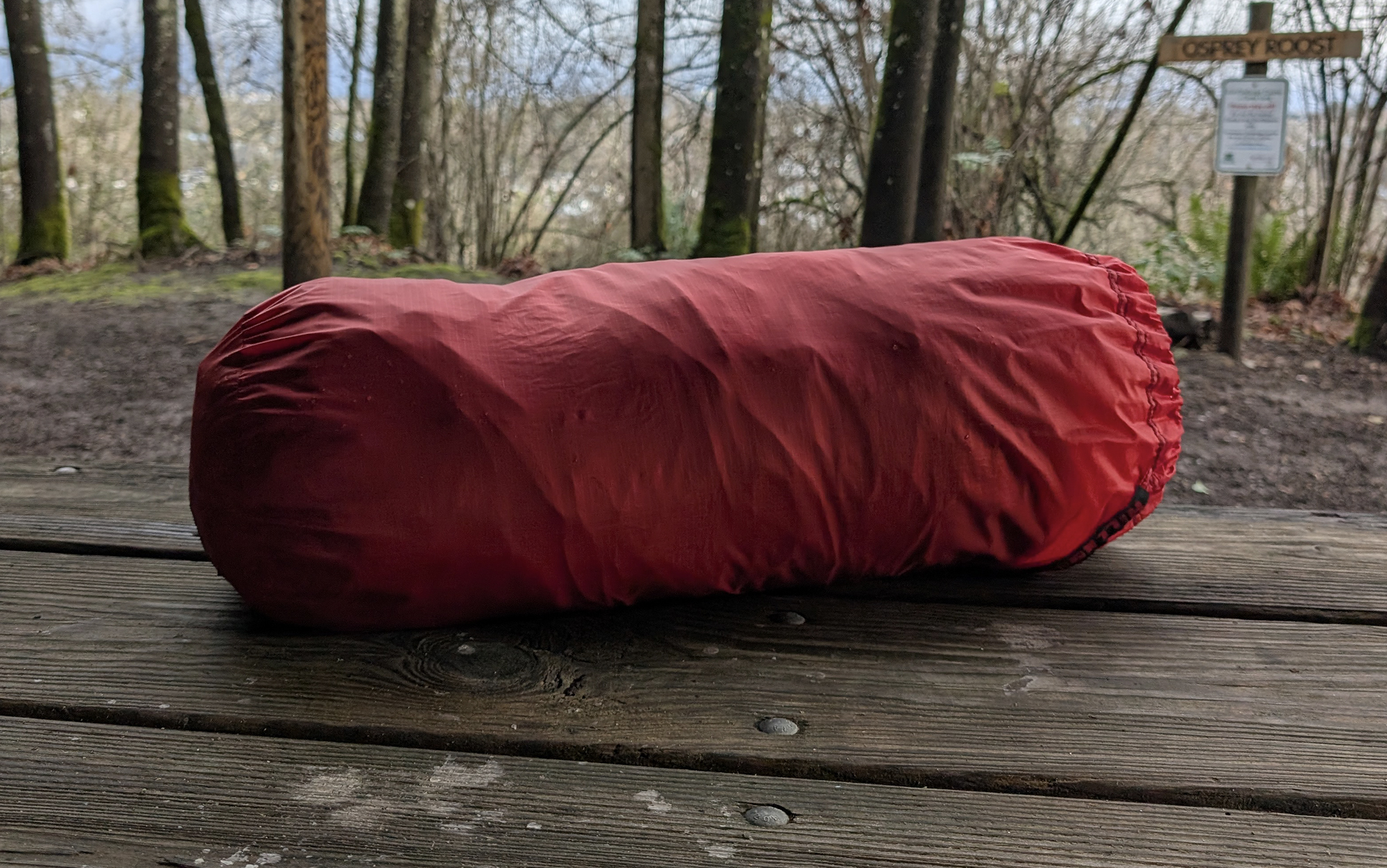
But the real elephant in the room with the Hilleberg Allak 3 is its price. This tent is nearly $1,500. That’s well over double, even triple, what most quality three-person backpacking tents cost.
Final Thoughts
Backpacking with young kids is mostly a mental game. Instead of putting your energy into pounding out the miles or gaining serious vert, you’re focused on helping them stay comfortable, motivated, and successful. With the Hilleberg Allak 3, you can pitch this tent basically anywhere and not worry about a thing. For me, that makes the extra weight a no-brainer when I’m with my family. The cost is tougher. For the limited use I was able to put this tent through during testing, it absolutely impressed me with its durability. And Hilleberg’s warranty, repair program, and reputation for excellence all indicate that this is a true buy-it-for-life-product. If you’re just starting out backpacking, or prefer a more minimalist approach, this is not what you want. But if you’re willing to spend top dollar for something that will perform flawlessly, every time, then it would be hard to do better.
